Food choking is a serious medical condition that needs to be dealt with in a way that would not result in an adverse fate. This blog is an explicit approach to the Introduction to food choking: causes, risks, and standard responses. Within such a framework, we will take apart the staging and symptoms of choking together with how to deal with it effectively so as to reduce re-occurrence. In addition, procedures required for first aid will also be described which include but are not limited to backblows and the Heimlich maneuver. The article succeeds in allowing the readers to deal with choking situations in a much better way, which is important for safety and preparedness.
 Choking can cause a number of signs such as coughing and gagging – in onset that is sudden, distress–looking expression, inability to either speak or make a sound, and difficulty breathing. In especially critical cases, patients may be seen to grab their necks or show signs of fight or even panic, plus their skin or lips could become bluish in color. These signs, however, need immediate redress to ascertain the degree of obstruction, and the requisite resuscitate measures can be undertaken forthwith.
Choking can cause a number of signs such as coughing and gagging – in onset that is sudden, distress–looking expression, inability to either speak or make a sound, and difficulty breathing. In especially critical cases, patients may be seen to grab their necks or show signs of fight or even panic, plus their skin or lips could become bluish in color. These signs, however, need immediate redress to ascertain the degree of obstruction, and the requisite resuscitate measures can be undertaken forthwith.
 I have mastered several principles of first aid that every mouth-to-mouth rescuer should know. It is prudent to begin by evaluating the level of the choking episode in regards to whether it is a partial choking or a complete one. If it is a partial choking, let me encourage the person to cough out the object. Related to this, if respiratory distress is total, then one needs to perform five back strikes at the mid-shoulders while extending the palm heel. If, despite these five taps, the airflow is still barred, then push inwards in five installments (the Heimlich effect) until the obstruction is shifted. Switch between back strikes and abdominal pushes until the object in question is removed or emergency help is received. Always keep in mind that the aim of these maneuvers is to avoid any danger to the person while allowing him to get back to normal in terms of respiration as soon as possible.
I have mastered several principles of first aid that every mouth-to-mouth rescuer should know. It is prudent to begin by evaluating the level of the choking episode in regards to whether it is a partial choking or a complete one. If it is a partial choking, let me encourage the person to cough out the object. Related to this, if respiratory distress is total, then one needs to perform five back strikes at the mid-shoulders while extending the palm heel. If, despite these five taps, the airflow is still barred, then push inwards in five installments (the Heimlich effect) until the obstruction is shifted. Switch between back strikes and abdominal pushes until the object in question is removed or emergency help is received. Always keep in mind that the aim of these maneuvers is to avoid any danger to the person while allowing him to get back to normal in terms of respiration as soon as possible.

 I understand that there is a multitude of risk factors for choking and that they differ greatly between different populations and cultures. The primary groups at greater risk will be the elderly and toddlers, as they have weak muscles and small airways, respectively. Also, those with specific health conditions, including neurological disorders that affect swallowing or having teeth with terrible chewing, are at increased risk. Lifestyle factors can also be significant; for example, eating in a rush or talking when a person is eating increases the chances of choking. People should be alert and know these risk factors, especially when in places such as hospitals, nursing homes, and schools that have vulnerable people in such close quarters. It is quite feasible to reduce choking incidents by managing these risks and implementing sound practices.
I understand that there is a multitude of risk factors for choking and that they differ greatly between different populations and cultures. The primary groups at greater risk will be the elderly and toddlers, as they have weak muscles and small airways, respectively. Also, those with specific health conditions, including neurological disorders that affect swallowing or having teeth with terrible chewing, are at increased risk. Lifestyle factors can also be significant; for example, eating in a rush or talking when a person is eating increases the chances of choking. People should be alert and know these risk factors, especially when in places such as hospitals, nursing homes, and schools that have vulnerable people in such close quarters. It is quite feasible to reduce choking incidents by managing these risks and implementing sound practices.
 I have created this supplemental note, out of my experience in the field as a practitioner, with the intent of providing helpful tips that would help parents prevent choking in their children. Let us start with making sure meals are served in a quiet manner as it will allow the children to concentrate on eating and not be in a situation where they may struggle to catch their breath as a result of quickly consuming their meal. In addition, high-risk types of food such as hotdogs, grapes, and lettuce should be sliced into small pieces as this prevents cutting off the airways. Further, adequate supervision during mealtime is very important; the supervising adults must pay attention to whether children are swallowing food or being choked on food. As far as risks posed by non-edibles are concerned, selecting the appropriate toy for the right age group and regularly checking the vicinity for withered pieces may be of great help. Last but not least, teaching the caregivers and parents basics of first aid in case of choking, for instance, the abdominothoracic thrust, will definitely make it possible for them to take swift and effective action if, for whatever reason, preventative measures do not work.
I have created this supplemental note, out of my experience in the field as a practitioner, with the intent of providing helpful tips that would help parents prevent choking in their children. Let us start with making sure meals are served in a quiet manner as it will allow the children to concentrate on eating and not be in a situation where they may struggle to catch their breath as a result of quickly consuming their meal. In addition, high-risk types of food such as hotdogs, grapes, and lettuce should be sliced into small pieces as this prevents cutting off the airways. Further, adequate supervision during mealtime is very important; the supervising adults must pay attention to whether children are swallowing food or being choked on food. As far as risks posed by non-edibles are concerned, selecting the appropriate toy for the right age group and regularly checking the vicinity for withered pieces may be of great help. Last but not least, teaching the caregivers and parents basics of first aid in case of choking, for instance, the abdominothoracic thrust, will definitely make it possible for them to take swift and effective action if, for whatever reason, preventative measures do not work.
 Due to my vested interest in safety, I can explain several ways in which small objects and food hazards that could risk choking can be identified. In terms of small objects the major concern is their dimension. For instance, objects smaller than the extension of the thumb can be identified with ease using the choke tube tester or small parts tester which acts in the same manner as the throat of a child. Such toys and other household items should be away from the reach of children.
When dealing with food safety issues, one of the important aspects understood is the characteristics of food that increase the likelihood of choking:
Due to my vested interest in safety, I can explain several ways in which small objects and food hazards that could risk choking can be identified. In terms of small objects the major concern is their dimension. For instance, objects smaller than the extension of the thumb can be identified with ease using the choke tube tester or small parts tester which acts in the same manner as the throat of a child. Such toys and other household items should be away from the reach of children.
When dealing with food safety issues, one of the important aspects understood is the characteristics of food that increase the likelihood of choking:
 The objective in the case of a choking person is to unclog the person’s airway in the quickest and safest manner. Here’s what you can do to assist:
The objective in the case of a choking person is to unclog the person’s airway in the quickest and safest manner. Here’s what you can do to assist:
What are the Signs of Choking?
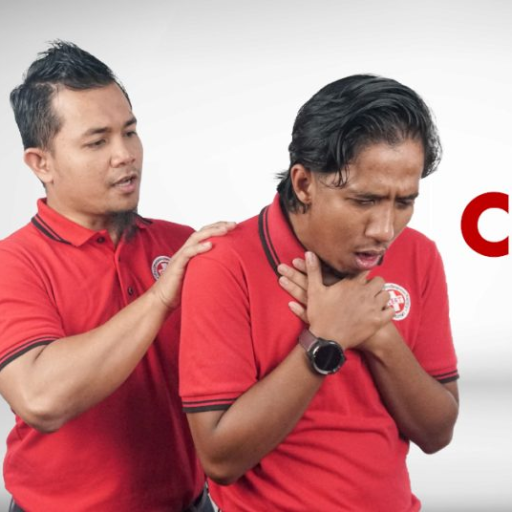 Choking can cause a number of signs such as coughing and gagging – in onset that is sudden, distress–looking expression, inability to either speak or make a sound, and difficulty breathing. In especially critical cases, patients may be seen to grab their necks or show signs of fight or even panic, plus their skin or lips could become bluish in color. These signs, however, need immediate redress to ascertain the degree of obstruction, and the requisite resuscitate measures can be undertaken forthwith.
Choking can cause a number of signs such as coughing and gagging – in onset that is sudden, distress–looking expression, inability to either speak or make a sound, and difficulty breathing. In especially critical cases, patients may be seen to grab their necks or show signs of fight or even panic, plus their skin or lips could become bluish in color. These signs, however, need immediate redress to ascertain the degree of obstruction, and the requisite resuscitate measures can be undertaken forthwith.
Recognizing the Universal Sign of Choking
With the knowledge that I have and have been a part of numerous emergency responses, it’s true that the awareness of the universal signs of choking is of great assistance in providing help without delay. A person’s throat grab gesture corresponds with non-verbal signals and indicates that they may be choked, in which it’s necessary to cover the mouth using both hands, otherwise they may choke to death. People who are unfamiliar with the situation may take time to understand that a particular incident is a choking emergency, and in such a case where there’s no understanding, it’s difficult to respond with other conditions. Knowing this sign increases opportunities for quick responses and provision of primary care, such as abdominal and back thrusts, which could have otherwise led to loss of life.Understanding the Symptoms of Choking
- Sudden Coughing or Gagging: A child not eating normally because they are coughing or gagging indicates that he/she is unable to breathe properly as food is blocking his/her air passage, which ends up being in a worse condition.
- Inability to Speak or Make Sounds: Further blockage in the air passage may cause a person not to suffocate but still not be able to make a sound and unable to speak. This is a critical-sounding issue that requires a more immediate form of treatment.
- Difficulty Breathing: An individual who may not or has high amounts of oxygen in the body may have a panicked look, because they aren’t able to breathe properly which is normal.
- Distressed Expression: An individual who may not or has high amounts of oxygen in the body may have a panicked look because they aren’t able to breathe properly, which is normal.
- Clutching the Throat: Choking is a common sign of how bad the condition is or if there is some form of blockage in the throat area, which is one of the signs.
- Cyanosis:Do not turn the drama on in real life as kids don’t use any form of makeup to change color so any if kids mouth or any part of their face has a tint or hint of blue it is because they have a blockage and are not getting enough oxygen.
Identifying Obstruction and Blockage
I would like to explain in a simple manner how one can ascertain whether there is such a case where a person or an individual has an obstruction or blockage in their airway:- Signs of Partial Obstruction: When an individual suffers from a partial obstruction, he might have difficulty breathing, coughing, or even talking but will be able to achieve such actions. Coughing can be noisy for them, and the above-average wheezing and whistling can be something quite normal for one, in this case, a sign of smooth functioning of the lungs, even if the breaths are shallow and restricted. Under such circumstances, it is advisable for the person to cough continuously as this is one of the most effective ways of clearing the airways, and it’s instinctive.
- Signs of Complete Obstruction:The severity of a complete airway obstruction is much greater than that of a partial obstruction. For the same reason, it is not easy to talk, cough, or even breathe. A person might also appear to be trying to make sounds but not actually be making any sound. To express their distress, they pull their necks and, unfortunately, grip their throat to show the universal choking sign. It is crucial to do whatever is necessary to intervene immediately, such as applying abdominal thrusts or back blows.
- Visual Indicators: Placing so much emphasis on the risk factors which are a great concern alongside tormented expressions, even turning red are all associated iii the quite alarming signs. A rapidly , crucial loss of oxygen are visual symptoms, target lips as an indication. A timely intervention pulling outward on the middle portion of the body or grabbing them by the waist to lift them off can work effectively.
- Behavioral Cues:The automatic elbow movements or the hand motion aimed at the throat or clothes is wringing which is also seen as the distal tries to urge through the potential occurrence. Such behavior while not common, does reveal that an individual is rough and aggressive while also having their space bubble compromised and one’s air needs are hard to come by.
How to Help Someone Who is Choking
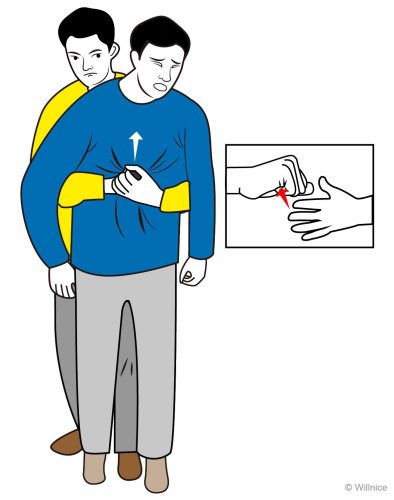 I have mastered several principles of first aid that every mouth-to-mouth rescuer should know. It is prudent to begin by evaluating the level of the choking episode in regards to whether it is a partial choking or a complete one. If it is a partial choking, let me encourage the person to cough out the object. Related to this, if respiratory distress is total, then one needs to perform five back strikes at the mid-shoulders while extending the palm heel. If, despite these five taps, the airflow is still barred, then push inwards in five installments (the Heimlich effect) until the obstruction is shifted. Switch between back strikes and abdominal pushes until the object in question is removed or emergency help is received. Always keep in mind that the aim of these maneuvers is to avoid any danger to the person while allowing him to get back to normal in terms of respiration as soon as possible.
I have mastered several principles of first aid that every mouth-to-mouth rescuer should know. It is prudent to begin by evaluating the level of the choking episode in regards to whether it is a partial choking or a complete one. If it is a partial choking, let me encourage the person to cough out the object. Related to this, if respiratory distress is total, then one needs to perform five back strikes at the mid-shoulders while extending the palm heel. If, despite these five taps, the airflow is still barred, then push inwards in five installments (the Heimlich effect) until the obstruction is shifted. Switch between back strikes and abdominal pushes until the object in question is removed or emergency help is received. Always keep in mind that the aim of these maneuvers is to avoid any danger to the person while allowing him to get back to normal in terms of respiration as soon as possible.
Performing the Heimlich Maneuver Safely
To perform the Heimlich maneuver correctly and avoid causing additional harm, start by positioning yourself behind the choking person and placing your arms around their waist. You will want to clench one fist, placing it directly above the person’s belly button, ensuring that the thumb is facing inward. The other hand will grab the fist and take a series of brisk upward movements focusing on the abdomen. Controlled and solid should describe quite a few movements. Each movement must be forceful enough to remove the blockage but be careful as not to cause unnecessary pain to the patient. Do not hesitate to repeat the maneuvers if further attempts are needed, but in the case that the obstruction still cannot be removed, be ready to administer CPR and quickly seek emergency help. The execution of these gestures should be calm and gentle in order not to irritate or aggravate the patient even more during such a tense situation of choking.Using Back Blows and Abdominal Thrusts
it is important to highlight the essentials of back blows and abdominal thrusts when helping a choking person. Mastering these techniques so that they are used in the right manner is essential.- Back Blows: While delivering a back blow, get slightly diagonally behind the individual while securing their chest using one of your hands. The individual can be tilted a little forward to let the object in their mouth which is blocking their airway to be expelled easily. Using the heel of the other hand, provide five firm blows between the shoulder blades. Every blow delivered should be focused in a way as to ease the removal of the obstruction.
- Abdominal Thrusts (Heimlich Maneuver): If back blows do not relieve choking, then shift to abdominal thrusts. To follow through, position yourself behind the affected individual and encircle their waist with your arms. Make a fist and place it just above the belly button with the thumb side turned towards the navel. Grab this fist with your other hand and thrust upward five continuous times. The arms should be controlled during the movement so as to compress the airway and push the object blocking it out.
Parameters to Ensure Effectiveness:
- Positioning: Ensure optimal positioning to prevent any chances of falling for both yourself and the person.
- Direction of Force: Abdominal thrusts should be aimed upwards into the diaphragm, while back blows should be directed outwards.
- Reassessment: After these steps have been done, try to reverse the sequence to see if the obstruction is cleared, or if there is need to do the steps again.
- Safety First: Continuous medical supervision is important as a preventive measure, even if the person has resumed normal breathing so that there are no complications.
Steps if the Person Becomes Unconscious
In the event that an individual who is suffering from choking loses consciousness, prompt measures have to be taken. In such cases, keep the following steps in mind for the patient’s assistance without losing your composure and stressing yourself:- Call for Help: The first step is to contact emergency services as soon as possible; if there is no one else present, do it yourself. This way, you can be sure that qualified medical help is on its way.
- Start CPR (Cardiopulmonary Resuscitation):
- Position: The patient should be rotated toward their back and placed on a flat and hard surface. Kneel beside the person’s shoulders.
- Chest Compressions: The heel of one of your hands should be placed in the middle of the person’s chest, and the palm of your other hand should be placed on the other hand. Interlace your fingers. Keeping your arms straight, push hard and fast using your body weight while performing a thrusting movement. The maximum pressure should be 2 inches deep and the target rate is 100-120 per minute.
- Rescue Breaths: If you are trained and feel comfortable, after 30 contractions, give two rescue breaths if able to do so and confident. Slightly extend the neck backward, close the nostrils using your thumb and index finger, wrap your mouth over the victim’s mouth, and blow air into the victim’s mouth until the chest lifts. The sequence of 30 compressions followed by rescue breaths should be repeated through cycles.
- Check the Airway: Prior to giving rescue breaths, check the airway for any obstructions by looking inside the mouth for any foreign body. Objects can be seen and it is generally possible to take them out gently with your fingers.
- Continue Until Help Arrives: Carry on with CPR cycles or resuscitation maneuvers until emergency services arrive at the scene and take charge, the individual resumes normal breathing, or the rescuer becomes too exhausted to go on.
Key Points to Remember:
- Confidence in Action: However, it’s also better to remember that performing even poorly executed CPR is better than no action at all.
- Regular Reassessment: Continuously monitor the person and see whether he becomes conscious or is able to breathe on his own.
- Emergency Medical Assistance: Remember to always get the person checked by a doctor after CPR has been performed & even if the person goes back to life.
How to Perform the Heimlich Maneuver on Someone
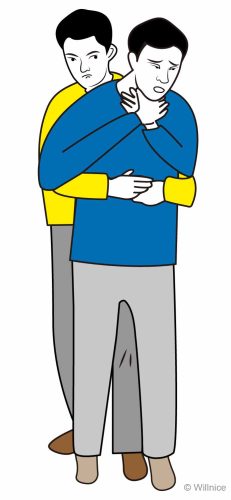
My Professional Method for Performing the Heimlich Maneuver
every time someone is choking, my first focus is to properly and slowly execute the Heimlich maneuver. I approach the person from behind and place my arms around the midsection of the person’s body. I then make a fist with one hand and put it just above the waist on the belly button. Each thrust I make is done cautiously so that enough force is applied right against the obstruction. I keep my focus absolutely on the other person and anticipate the need for any further effort on my part, like compression if required. All steps taken in this task are directed towards vigorous and rapid activity to improve chances of success.Positioning Yourself Behind the Person
The Heimlich maneuver is most effective when the rescuer positions themselves accurately. Allow me to guide you through this step-by-step: You will first begin by ensuring safety in the immediate environment, especially the area around the individual you are assisting. The ground should be free of any obstructions or items that may cause people to trip or fall. One should assume a position so they are standing directly behind the person. With your feet spread shoulder width, you will ensure your balance and stability is maintained; this will help you as you do not want to lose your footing during the maneuver. You may want to assist the person slowly as she or he moves forward a bit. This will make it easier for the foreign object to fall out of the mouth, if it’s displaced. This will also help to position the individual’s body in a way that your thrusts will be more powerful. Place your hands around the individual’s waist area. Be careful with how firmly you are gripping them as this is quite a delicate area; nonetheless, ensure that a sturdy grip is present. All of this will assist in performing the maneuver with minimal movement or struggle. Finally, make sure you have the right hand placement ready. Make a fist with your one hand and position it above the navel but below the rib cage. Use the second hand to grab the first one, but make sure that elbows are pointing outward. Perform the Maneuver: While pushing the thrusts in a sustained manner, ensure the directed force is applied toward the upper abdomen, with the axis of the force being inwards towards the diaphragm. The motion has to be rapid but controlled, with a focus on increasing airway pressure. After carefully considering these instructions, one is bestowed with the ability to instigate an intervention that is not only safe, but also has the greatest potential of dislodging the obstruction. Always keep in mind the importance of not becoming overly excited, and that you are ready to tweak your course of action should the circumstance of the individual presents a need for that.Executing Abdominal Thrusts Correctly
The practice that is more commonly referred to as the Heimlich maneuver, i.e., performing abdominal thrusts, can turn out to be a vital procedure. Let us break down the process for you:- Identify the Need: Prior to considering any measures, make certain that the person is indeed true choking. These include: speaking is not possible, cough making is impossible, or putting one’s hands around their neck gestures depicting trouble.
- Stand Behind the Person: Get directly behind the person in need of assistance. Balance is very important and to ensure balance, feet have to be 12 inches apart and always shoulder aligned.
- Hand Placement: Clasp one fist about a person’s mid-lower abdomen while placing the other hand over grasping the demanding thrust. This fist should be placed in between a person’s navel and ribs because it is the optimal area for accurate punches and thrusts.
- Performing Thrusts: Start by thrusting a bit faster and making the first directed inward at the chest. The intention should be imagined that a bit pull upwards at the bottom of their chin. Such motions would assist to remedy the predecessor thanks to prompting the disallowed things.
- Monitor Condition:Seeking change might be effective when coupled with some other activities that would ramp up brainstorming. In case of start equal breathing start coughing, repeat the previous position till the target is completely advanced.
- Parameters to Consider:
- Position: When in a stationary position, form and position are necessary to be watched to avoid any added complications.
- Force: In moderation is how the aim should be directed to deliver. Do not employ too much pressure as to cause harm.
- Awareness: Try to gauge the responses of the target and alter accordingly. Override the initial position waiting for a while if unconsciousness directly sets in. Be prepared to give the person CPR right after.
When to Use Chest Thrusts
Where abdominal thrusts may not be suitable or effective, chest thrusts are offered as an alternative to thrusting the chest and are made effective with the use of hands. The chest exertion of force is described in detail that follows afterward, along with specific parameters to effectively use the technique:- Pregnant Individuals:
- Detail: Because the stomach changes during pregnancy, abdominal thrusts may hurt the baby. Chest thrusts do not exert any force on the uterus.
- Data: Studies have proved chest thrusts to be successful in relieving the obstructions of the airway without endangering the intrauterine fetus.
- Obese Individuals:
- Detail: There is a disadvantage of excess tissue on or above the abdomen, which can reduce the strength of abdominal thrusts during resuscitation.
- Data: Some studies report that chest thrusts are more effective since they are more targeted and powerful.
- Infants Under One Year:
- Detail: Since their abdominal regions are more prone to injury, chest thrusts can be especially advised for babies.
- Data: Peters' guidelines consider chest thrusts combined with back slaps to be the best technique for infants.
- Individuals in a Wheelchair or Those Unable to Stand:
- Detail: In cases where an individual is sitting or is unable to stand, performing chest thrusts is, at times, easier.
- Data: Surveys and clinical guidelines support the use of chest thrusts in these situations since the risks associated with other ineffective maneuvers are greater.
- Those with Abdominal Injuries:
- Detail: In case there is an injury or medical condition that renders abdominal thrusts unfit to use, method of thumb pressure on the chest is selected as the safest option.
- Data: Medical directives in cases of emergency are insistent on determining the condition of a person so as to select the reasonable thrust method.
What are the Risk Factors for Choking?
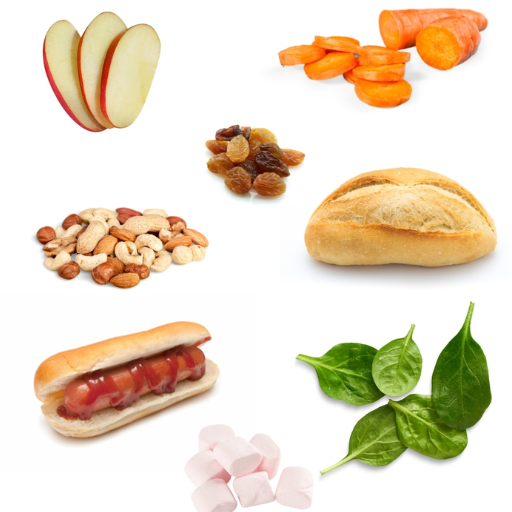 I understand that there is a multitude of risk factors for choking and that they differ greatly between different populations and cultures. The primary groups at greater risk will be the elderly and toddlers, as they have weak muscles and small airways, respectively. Also, those with specific health conditions, including neurological disorders that affect swallowing or having teeth with terrible chewing, are at increased risk. Lifestyle factors can also be significant; for example, eating in a rush or talking when a person is eating increases the chances of choking. People should be alert and know these risk factors, especially when in places such as hospitals, nursing homes, and schools that have vulnerable people in such close quarters. It is quite feasible to reduce choking incidents by managing these risks and implementing sound practices.
I understand that there is a multitude of risk factors for choking and that they differ greatly between different populations and cultures. The primary groups at greater risk will be the elderly and toddlers, as they have weak muscles and small airways, respectively. Also, those with specific health conditions, including neurological disorders that affect swallowing or having teeth with terrible chewing, are at increased risk. Lifestyle factors can also be significant; for example, eating in a rush or talking when a person is eating increases the chances of choking. People should be alert and know these risk factors, especially when in places such as hospitals, nursing homes, and schools that have vulnerable people in such close quarters. It is quite feasible to reduce choking incidents by managing these risks and implementing sound practices.
Understanding Common Choking Hazards
I can say that the common choking hazards are most times right under our noses. First, hard candy, popcorn, grapes and nuts especially are impermeable to air and cause a great deal of choking. Children and elderly people are always at risk and the reduction of choking occurrences may be as simple as cutting them into smaller pieces or not using certain foods at all. Then there are small toys, buttons, and coins, which are non-food items but can be a threat, especially to children. These toys can be a threat when not all necessary conditions are taken care of such as checking for small loose parts or when the toys are above the average age. In relation to drinks, chucks in a thick fluid can also result in choking. Here slow sips should suffice but if stealing is a problem, assurance that all drinks are properly blended may help in this situation. Moreover, these factors cannot be ignored in our considerations either. Special care should be exercised when dealing with individuals suffering from swallowing disorders especially those of a neurological origin that struggle with smooth foods. Such measures can be applied, for instance, food residues eliminate after eating and swallow evaluation done from time to time. Finally, environmental factors such as schools and gaming zones should also be kept in mind since the chances of coming across risks in such places increases when there is a large amount of clutter and a wide range of objects. Maintaining roped off zones in organized fashion can significantly reduce chances of choking. By identifying and preventing these risks, choking incidences in the population can be reduced significantly, and safe environments can be guaranteed for all.Recognizing High-Risk Groups for Choking
Defining high-risk choking groups is one of the effective methods to prevent incidents, and it aims to achieve successful management during the event. The following are the sore groups and the relevant aspects to look at:- Elderly Individuals:
-
- Parameter: Declination of muscular strength.
- Detail: Older individuals may experience weakness in the muscles located in the throat as well as in the esophagus which would bring about an increased risk of choking during swallowing.
- Young Children:
- Parameter: Smaller airway size.
- Detail: Children possess a smaller diameter of the airways, which can instantly get blocked by any food particles or small objects. Also, their oral interest in them enhances this risk.
- Individuals with Neurological Disorders:
- Parameter: Impaired swallowing reflex.
- Detail: Diseases such as stroke or Parkinson's cause loss of motor skills as well as coordination problems, and as a result, swallowing problems known as dysphagia arise.
- Individuals with Dental Problems:
- Parameter: Inefficient chewing.
- Detail: The chewing process can become inefficient as a result of poor dental health, which will consequently result in a larger chunk of food to be consumed which is harder to swallower.
- Those with Swallowing Difficulties (Dysphagia):
- Parameter: Difficulty in food transition from mouth to esophagus.
- Detail: This vulnerability can be attributed to several medical disorders and increases the risk of choking.
- People Engaging in Rapid Consumption:
- Parameter: Speed of eating and distraction.
- Detail: When food is swallowed with almost no chewing out of a desire to complete the meal in a single gulp or is accompanied by talking and/or laughing, the risk of choking goes up considerably.
How to Prevent Choking in Children
 I have created this supplemental note, out of my experience in the field as a practitioner, with the intent of providing helpful tips that would help parents prevent choking in their children. Let us start with making sure meals are served in a quiet manner as it will allow the children to concentrate on eating and not be in a situation where they may struggle to catch their breath as a result of quickly consuming their meal. In addition, high-risk types of food such as hotdogs, grapes, and lettuce should be sliced into small pieces as this prevents cutting off the airways. Further, adequate supervision during mealtime is very important; the supervising adults must pay attention to whether children are swallowing food or being choked on food. As far as risks posed by non-edibles are concerned, selecting the appropriate toy for the right age group and regularly checking the vicinity for withered pieces may be of great help. Last but not least, teaching the caregivers and parents basics of first aid in case of choking, for instance, the abdominothoracic thrust, will definitely make it possible for them to take swift and effective action if, for whatever reason, preventative measures do not work.
I have created this supplemental note, out of my experience in the field as a practitioner, with the intent of providing helpful tips that would help parents prevent choking in their children. Let us start with making sure meals are served in a quiet manner as it will allow the children to concentrate on eating and not be in a situation where they may struggle to catch their breath as a result of quickly consuming their meal. In addition, high-risk types of food such as hotdogs, grapes, and lettuce should be sliced into small pieces as this prevents cutting off the airways. Further, adequate supervision during mealtime is very important; the supervising adults must pay attention to whether children are swallowing food or being choked on food. As far as risks posed by non-edibles are concerned, selecting the appropriate toy for the right age group and regularly checking the vicinity for withered pieces may be of great help. Last but not least, teaching the caregivers and parents basics of first aid in case of choking, for instance, the abdominothoracic thrust, will definitely make it possible for them to take swift and effective action if, for whatever reason, preventative measures do not work.
Identifying Small Objects and Food Hazards
 Due to my vested interest in safety, I can explain several ways in which small objects and food hazards that could risk choking can be identified. In terms of small objects the major concern is their dimension. For instance, objects smaller than the extension of the thumb can be identified with ease using the choke tube tester or small parts tester which acts in the same manner as the throat of a child. Such toys and other household items should be away from the reach of children.
When dealing with food safety issues, one of the important aspects understood is the characteristics of food that increase the likelihood of choking:
Due to my vested interest in safety, I can explain several ways in which small objects and food hazards that could risk choking can be identified. In terms of small objects the major concern is their dimension. For instance, objects smaller than the extension of the thumb can be identified with ease using the choke tube tester or small parts tester which acts in the same manner as the throat of a child. Such toys and other household items should be away from the reach of children.
When dealing with food safety issues, one of the important aspects understood is the characteristics of food that increase the likelihood of choking:
- Size: Foods that are larger than a child's trachea like whole grapes or large chunks of meat pose serious dangers. Cutting food into bite-size pieces is of great importance.
- Shape: Foods that are round such as nuts and hotdogs are a choking hazard. Their risk is lessened by cutting them into lengths.
- Texture: Peanut butter and Taffy which are sticky or too chewy can stick in the throat and become hard to chew thus increasing choking risk.
- Consistency: Foods that are more chunky, like peanut butter, can be an issue due to the fact they may not be eaten in one go.
- Hardness:Vegetables and candies which are raw are classified as hard and need a lot of chewing which may be a problem for some young ones.
Creating a Choking Prevention Plan
In your field of expertise, what I would want to do is outline an effective program for choking prevention that is clear but quite detailed as well. Practically, we can:- Assess the Eating Environment:
- Parameter: Ensure a focused and distraction-free atmosphere.
- Detail:Apply the simple principle of making every mealtime’s atmosphere as relaxing and enjoyable as possible as this will naturally promote slower chewing and reduce the risk of choking.
- Prepare Safe Foods:
- Parameter: Match food texture and size to children’s age and ability.
- Detail:Cut and mash food into smaller and tender pieces that are suitable for children's mouths. They can chew and swallow with little risk.
- Educate on Proper Chewing:
- Parameter: Improve food breakdown.
- Detail:Through effective modeling and encouragement, children can be taught to chew each bite of food well. This reduces the chances of large morsels of food posing risks of choking.
- Supervise Meals Diligently:
- Parameter: Enable timely assistance.
- Detail:Whenever possible, be available during mealtime to intervene in case you see a child choking. Quick response can avoid dire situations.
- Incorporate Hydration During Meals:
- Parameter: Assist in swallowing and food passage.
- Detail:Encourage taking small drinks of water between bites, as it will assist in the easy swallowing of morsels as well as reduce the chances of large pieces getting lodged in one’s throat.
- Conduct Training in Basic First Aid:
- Parameter: Equip caregivers with emergency skills.
- Detail:The knowledge of the Heimlic maneuve and other first aid inteventions is signifiant to ensure asmit being wihout any precaution things can be handled if chocking incedent happens.
What to Do When Someone is Choking?
 The objective in the case of a choking person is to unclog the person’s airway in the quickest and safest manner. Here’s what you can do to assist:
The objective in the case of a choking person is to unclog the person’s airway in the quickest and safest manner. Here’s what you can do to assist:
- Identify the problem:
- Parameter:Be alert to the cues of choking by noticing if the person has a hand around their throat, difficulty in inhaling or exhaling, and if they can speak or produce a cough, and look at their coloration, which must not be bluish.
- Detail: Quick identification is crucial so you can act immediately.
- Encourage Coughing:
- Parameter:If the patient is capable of coughing, instruct him to do so as it may help in dislodging the object.
- Detail:It is the body’s reflex to cough, and in most cases, it can rectify the problem on its own.
- Perform the Heimlich Maneuver (Abdominal Thrusts):
- Parameter: Suitable for children and adults aged above one year of age who are unable to cough or breathe adequately.
- Detail: Support the infant's head and trunk, give up to five blows to the back, and provide five soft thrusts to the chest.
- Give Back Blows and Chest Thrusts (for Infants):
- Parameter: Adapt the answer for children aged 12 months or older.
- Detail: To give first aid, the infant’s head and torso should be secured, and up to five blows to the back should be provided, followed by five gentle thrusts to the chest.
- Call Emergency Services:
- Parameter: In the event that the individual is unable to remove the foreign body or becomes unresponsive, an emergency professional should be called.
- Detail: Even though the person has thankfully been able to relieve the choking, further medical attention is recommended for an evaluation for any injury sustained still remaining.
- Prepare for CPR if Necessary:
- Parameter: Holy samed! Lactation, mediation, and AUX Oxygen can be placed between lips if an organism can push the diaphragm quite decently.
- Detail: It is vital to understand that feeling unable to perform CPR can slow oppressing times and still manage to keep perfusion of oxygen to critical areas progressing until substitutes arrive.
Calling for First Aid and Medical Emergency Assistance
the most appropriate strategy to overcome a choking situation is to make a call for first-aid and medical help. Therefore, emergency numbers should be dialed immediately, especially when the victim is not able to speak, cough, or is unconscious. It is very important to communicate clearly with them; explain where you are and what the patient is like at that moment. That way, they will be able to send help without delay. Where First Aid is available, do not hesitate to apply the required measures until professional medical services are available. In such cases, always remember that pursuing medics will always be the best to improve the prognosis.Reference
- Mayo Clinic: First aid for a choking person
- American Red Cross: Adult & Child Choking
- St John Ambulance: Adult Choking - Symptoms & First Aid Advice
Frequently Asked Questions (FAQs)
Q: What are the signs and symptoms that someone is choking on food?
A: The signs and symptoms of choking include difficulty breathing, coughing, inability to speak, gagging, and signs of distress. If the airway is completely obstructed, the person may be unable to cough or make any noise and might show a bluish color around the lips.Q: What is the first thing you should do when you see someone choking?
A: Ask the person, "Are you choking?" If they can't respond but can cough, encourage the person to keep coughing forcefully to try and dislodge the foreign object. If they can't cough, speak, or breathe, immediate action is required.Q: How can you help save someone who has food stuck in the throat?
A: Stand behind the person, wrap your arms around their abdomen, and make a fist with your other hand. Place the thumb side of your fist slightly above the person's navel and below the ribcage. Grasp your fist with your other hand and perform quick, upward thrusts to dislodge the object.Q: What should you do if back blows are needed?
A: If the person is still choking, use the heel of your hand to give up to 5 back blows between their shoulder blades. This can help dislodge the object from the windpipe.Q: What steps should be taken if the choking person becomes unresponsive?
A: If the person becomes unresponsive, call emergency services and begin CPR (cardiopulmonary resuscitation) immediately. Continue to check the mouth for the object and attempt to dislodge it while performing chest compressions.Q: How should you assist a child choking on a piece of food?
A: For a child older than 1 year, follow the same procedure as for an adult: perform back blows and abdominal thrusts. Be more gentle and use less force when performing these actions.Q: What is the recommended way to help an infant under 1 year who is choking?
A: For an infant, lay them face down along your forearm, ensuring you support their head. Give up to 5 gentle back blows with the heel of your hand. If the object does not dislodge, turn the infant over and give 5 chest thrusts using two fingers in the center of the chest.Q: What precautions can be taken to prevent choking on food?
A: To prevent choking, cut food into small, manageable pieces, chew food thoroughly, avoid talking or laughing while eating, and keep small objects out of reach of children. Educate family members and caregivers on what to do if choking occurs.Q: What are some common items that may cause choking in adults and children?
A: Common items include chunks of food, hard candies, nuts, grapes, hot dogs, and toys or small objects that can easily get lodged in the windpipe or food pipe, resulting in choking.1558


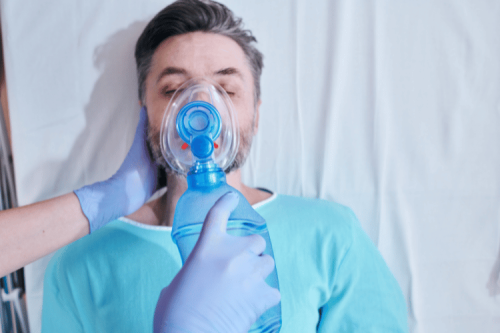
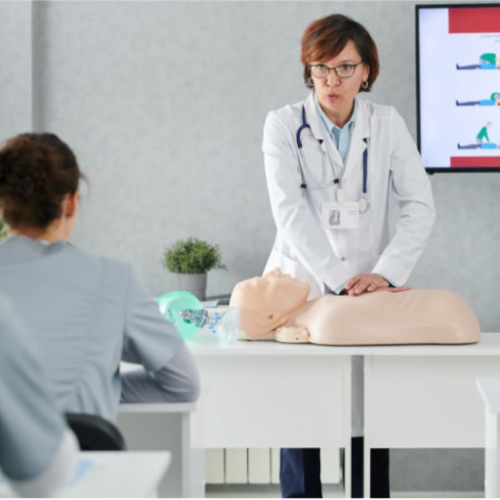
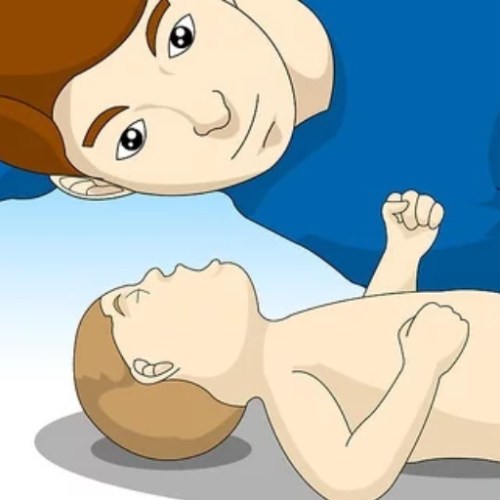


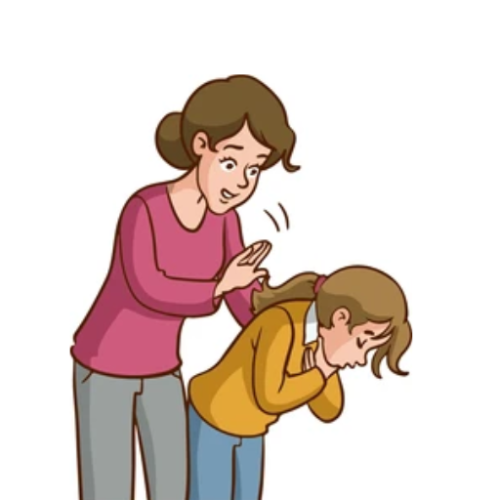
 Login with Google
Login with Google Login with Facebook
Login with Facebook